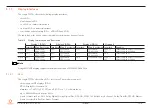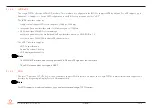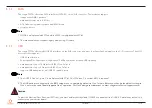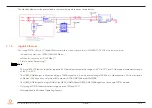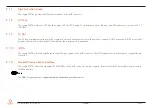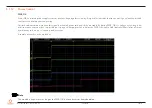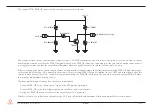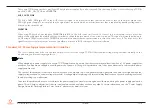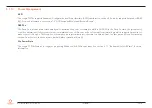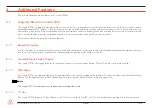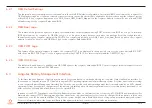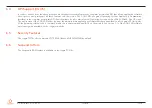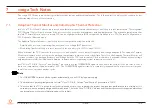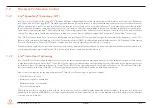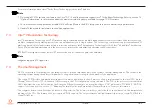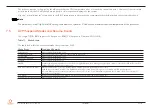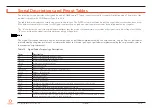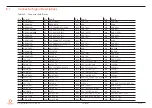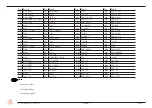
Copyright
©
2022
congatec
GmbH
TCTOm01
39/70
7.2
Processor Performance Control
7.2.1
Intel
®
SpeedStep
®
Technology (EIST)
Intel
®
processors found on the conga-TC570r run at different voltage/frequency states (performance states), which is referred to as Enhanced
Intel
®
SpeedStep
®
Technology (EIST). Operating systems that support performance control take advantage of microprocessors that use several
different performance states in order to efficiently operate the processor when it is not being fully used. The operating system will determine
the necessary performance state that the processor should run at so that the optimal balance between performance and power consumption
can be achieved during runtime. The Windows family of operating systems links its processor performance control policy to the power scheme
setting. You must ensure that the power scheme setting you choose has the ability to support Enhanced Intel
®
SpeedStep
®
technology.
The 11th Generation Intel
®
Core
™
processor family supports Intel Speed Shift, a new and energy efficient method for frequency control. This
feature is also referred to as Hardware-controlled Performance States (HWP). It is a hardware implementation of the ACPI defined Collaborative
Processor Performance Control (CPPC2) and is supported by newer operating systems (Win 8.1 or newer).
With this feature enabled, the processor autonomously selects performance states based on workload demand and thermal limits while also
considering information provided by the OS e.g., the performance limits and workload history.
7.2.2
Intel
®
Turbo Boost Technology
Intel
®
Turbo Boost Technology allows processor cores to run faster than the base operating frequency if it is operating below power, current, and
temperature specification limits. Intel
®
Turbo Boost Technology is activated when the Operating System (OS) requests the highest processor
performance state. The maximum frequency of Intel
®
Turbo Boost Technology depends on the number of active cores. The amount of time the
processor spends in the Intel Turbo Boost Technology state depends on the workload and operating environment.
Any of the following can set the upper limit of Intel
®
Turbo Boost Technology on a given workload:
•
Number of active cores
•
Estimated current consumption
•
Estimated power consumption
•
Processor temperature
When the processor is operating below these limits and the user’s workload demands additional performance, the processor frequency
dynamically increases by 100 MHz on short and regular intervals until the upper limit is met or the maximum possible upside for the number
of active cores is reached.

